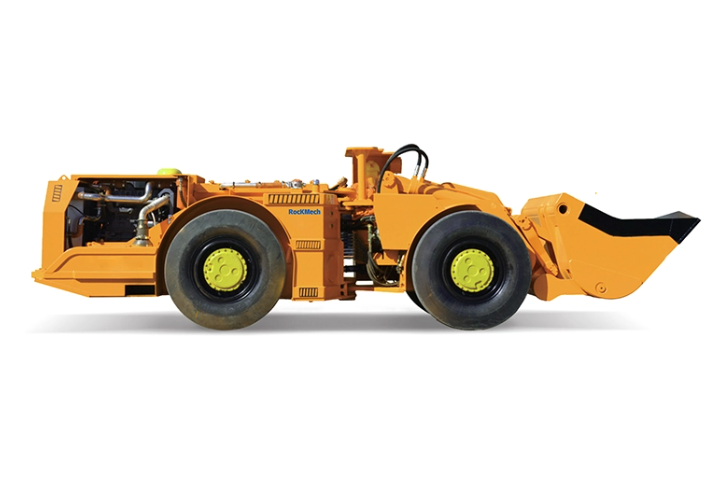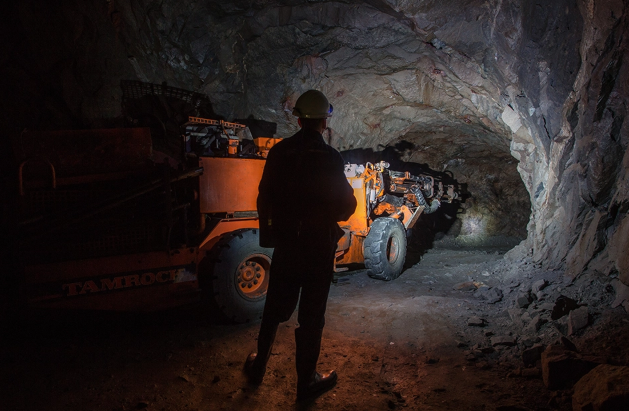









Mining trucks are the powerhouse vehicles that keep modern mining operations moving. But what exactly is a mining truck, and how does it differ from a regular dump truck? In this guide, we’ll explore everything you need to know—from types of mining trucks and payload capacities to how they’re used in harsh environments. Whether you’re curious about haul trucks, underground mining trucks, or electric mining truck options, this article has you covered. Let’s dive into the world of mining vehicles built for extreme work and rugged terrain.
Mining is all about moving tons of rock, soil, and ore—fast and efficiently. Whether digging deep underground or scooping surface materials in giant open-pit mines, operations rely on smart logistics. It’s not just about digging. It’s about getting those materials to the right place at the right time. That’s where mining trucks come in.
A mining truck—sometimes called a haul truck or dump truck—is a giant off-road vehicle made to carry heavy loads in mining zones. These trucks aren’t like the ones you see on highways.
Let’s break it down. Mining trucks are not optional—they’re core to the entire operation. With them, we get:
Fast transport from mine site to processing plant
Improved efficiency—fewer trips mean more ore moved per hour
Operator safety—modern cabs reduce fatigue and risk
Adaptability to hot deserts, icy roads, steep slopes
They’re like arteries in the mining body—always moving material, always critical.

Mining trucks do more than just carry stuff—they keep entire mining operations running smoothly. Without them, everything slows down. These machines move materials, clear paths, and help miners work faster and safer.
Once ore or rock gets blasted from the ground, it needs a ride. That’s the mining truck’s main job. It loads up huge quantities of raw material and hauls it from the pit or shaft to where it’s needed—processing plants, crushers, or storage areas. A single truck load can carry hundreds of tons in one trip. That’s what makes them so important. They cut down on time, fuel, and labor.
Before valuable ore can be mined, layers of dirt and rock need to go. That waste material is called overburden. It’s not useful, but it’s in the way. Mining trucks are used to haul it out of the pit. The faster they move it, the faster workers can reach the actual ore underneath.
Mining is all about volume. The more you move, the more money you make. But equipment breakdowns or slow transport can bring operations to a halt. That’s where mining trucks shine. They’re built for long hours and heavy loads. And when they work well, everything else flows better.
Efficiency boosters:
High payload = fewer trips
Powerful engines = faster cycles
Rugged tires = better terrain handling
Electric drive (in some trucks) = fuel savings
Mining isn’t easy. Drivers work in tough conditions: heat, dust, vibrations, steep slopes. Mining trucks are designed to protect them. Modern trucks include features to make the job safer and less tiring:
Wide-view cabs
Air filters and climate control
Ergonomic controls
Cameras and sensors for blind spots
Roll-over protection systems (ROPS)
Some even use automatic systems to reduce the chance of human error. When drivers feel secure and alert, everyone benefits.
Haul trucks, also known as mining dump trucks, are the massive vehicles used in open-pit mines. These giants transport huge amounts of materials like ore, rock, and overburden from the mining pit to processing areas. They’re designed specifically for mine sites and not for regular roads.
Haul trucks are essential for high-volume transport over short distances. Their primary use is in open-pit mining, where they move large quantities of ore, soil, and waste rock. These trucks are built to handle the rugged conditions of a mine site, making them perfect for heavy-duty tasks.
Underground mining requires a different kind of truck. These vehicles are smaller and more compact, designed to fit into tight spaces and narrow tunnels. Despite their smaller size, underground mining trucks are built to be tough and durable.
Underground mining trucks have a low-profile design, allowing them to navigate narrow tunnels and steep inclines. Their compact size makes them perfect for hard rock underground mining, where space is limited.
These trucks are built with heavy-duty frames to handle rough surfaces and harsh conditions. They often work in tandem with loaders to quickly transfer ore from the mining face to the processing area.
Mining trucks come in two main types: articulated and rigid frame. Each type has its own strengths and is suited to different terrains and job sites.
Articulated trucks have a jointed body, allowing them to make tighter turns and navigate uneven ground. They’re ideal for quarries and muddy sites where flexibility is key. Rigid frame trucks, on the other hand, have a solid frame and are best suited for smooth, open-pit mining roads. They can carry larger loads but require more space to maneuver.
Articulated trucks are great for soft, uneven ground. Their ability to bend in the middle gives them better stability on rough terrain. Rigid frame trucks are more stable at high speeds and are perfect for flat, wide-open areas.
| Feature | Articulated Trucks | Rigid Frame Trucks |
|---|---|---|
| Design | Jointed body | Solid frame |
| Turning Radius | Tighter turns, more flexible | Wide turns, less maneuverable |
| Terrain Adaptability | Soft, uneven ground | Smooth, open-pit roads |
| Load Size | Medium to large | Very large |
| Stability | Better on rough ground | Stable at high speeds |
| Common Use | Quarries, muddy sites | Open-pit mining |
Understanding the differences between articulated and rigid frame trucks can help mining operations choose the right vehicle for their specific needs.
Mining trucks play a crucial role in moving raw materials. They transport ore from the extraction point to the processing plant. This step is vital for the mining process.
From Extraction Point to Processing Plant: Trucks carry heavy loads over short distances. They ensure that materials reach processing areas quickly and efficiently.
Efficiency in Transport: By handling large volumes, mining trucks reduce the number of trips needed. This saves time and resources.
In open-pit mining, mining trucks have another important job. They move overburden, which is the soil and rock covering valuable minerals.
What is Overburden?: Overburden is the material that lies above the ore. It needs to be removed to access the minerals below.
Truck Use in Site Clearing: Mining trucks haul away overburden. This clears the site and makes way for mining operations. They transport the material to designated waste areas.
Mining trucks operate in tough conditions. They work in deserts, arctic regions, and mountainous zones. These environments present unique challenges.
Deserts: Extreme heat and sandy terrain test the durability of mining trucks. They need special cooling systems and robust tires to handle the sand.
Arctic Regions: In cold climates, mining trucks must withstand freezing temperatures. They require heated cabs and antifreeze systems to keep running.
Mountainous Zones: Steep inclines and rugged terrain demand powerful engines and strong brakes. Mining trucks are designed to handle these conditions safely.
These trucks are built to perform in any environment, making them essential for mining operations worldwide.
Regular maintenance is crucial for mining trucks. It extends their life by keeping parts in good condition. This prevents wear and tear. Maintenance also reduces downtime. By fixing small issues early, you avoid big breakdowns. This keeps trucks on the job. Proper care lowers fuel consumption too. Clean filters and tuned engines use fuel more efficiently. This saves money and reduces emissions.
Monthly maintenance is key to keeping mining trucks running smoothly. Air filters need regular cleaning or replacing. This ensures engines get enough air. Dirty filters reduce power and fuel efficiency. Check the alternator to make sure it charges the battery. A weak alternator can leave you stranded. Inspect the battery connections and charge levels. A dead battery means no start. Change the oil regularly. Clean oil keeps engines running smoothly and prevents damage. Finally, inspect the brakes. Check brake pads and fluid levels. Safe braking is crucial for heavy loads.
Tires are critical for mining trucks. Proper care ensures they last longer and perform better. Rotate tires regularly to even out wear. This keeps them balanced and extends their life. Check tire pressure often. Proper inflation improves traction and fuel efficiency. Keep tires aligned. Misaligned tires wear unevenly and can cause handling issues. Clean tires regularly to prevent corrosion from chemicals and dirt. This keeps them in good condition.
Annual inspections by professionals are vital. Experts can spot issues you might miss. They use advanced tools to check for hidden problems. This helps identify issues before they become serious. Use the results of the annual inspection to update your monthly routine. This ensures you catch potential issues early and keep your trucks running smoothly.
Listening to your truck can help detect issues early. Strange noises often indicate problems. A squeaky fan belt means it’s loose or worn. Replace it to avoid overheating. Knocking sounds can signal engine trouble. Check pistons and valves to prevent damage. Backfiring can indicate fuel or ignition issues. Fixing it early prevents engine damage. Preventative maintenance is about catching problems before they happen. Regular checks and timely repairs keep trucks running smoothly. This approach saves time, money, and keeps your mining operations on track.

Now that you’ve got a clearer picture of what mining trucks really do—hauling, climbing, clearing, and powering through extreme terrain—it’s easy to see why they’re the heartbeat of any serious mining operation. Choosing the right type, keeping it well-maintained, and understanding its capabilities can mean the difference between delays and nonstop productivity.
At RockMech (Yantai) Heavy Machinery Co., Ltd., we don’t just sell mining trucks—we engineer solutions built for the world’s toughest job sites. Ready to upgrade your fleet or explore electric-drive options? Let’s talk.